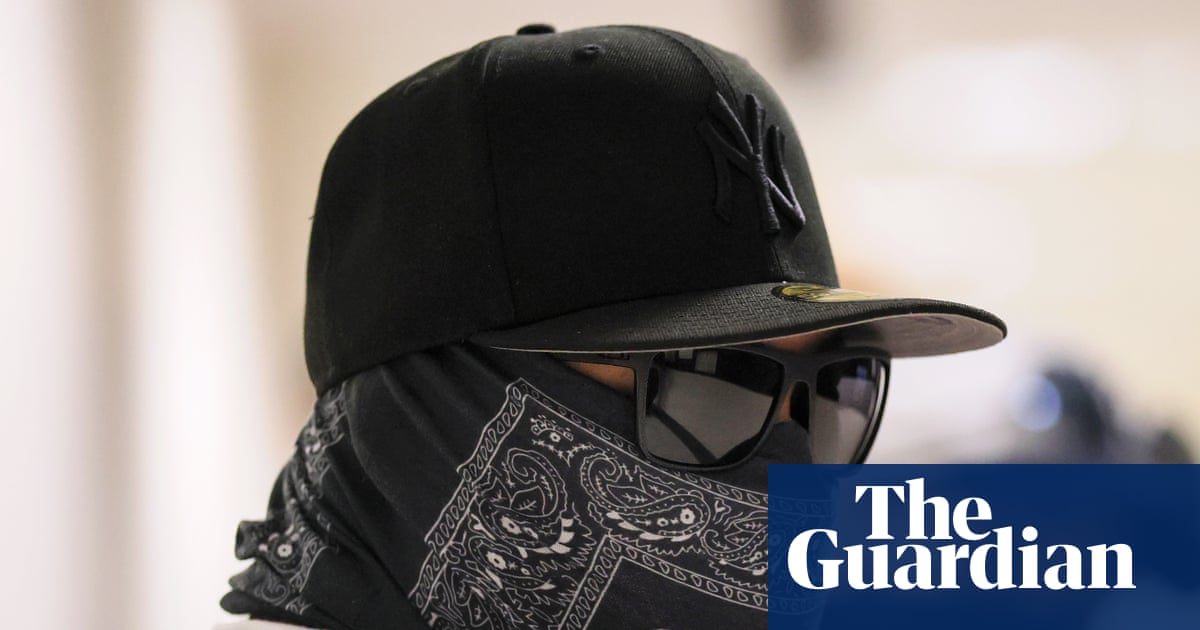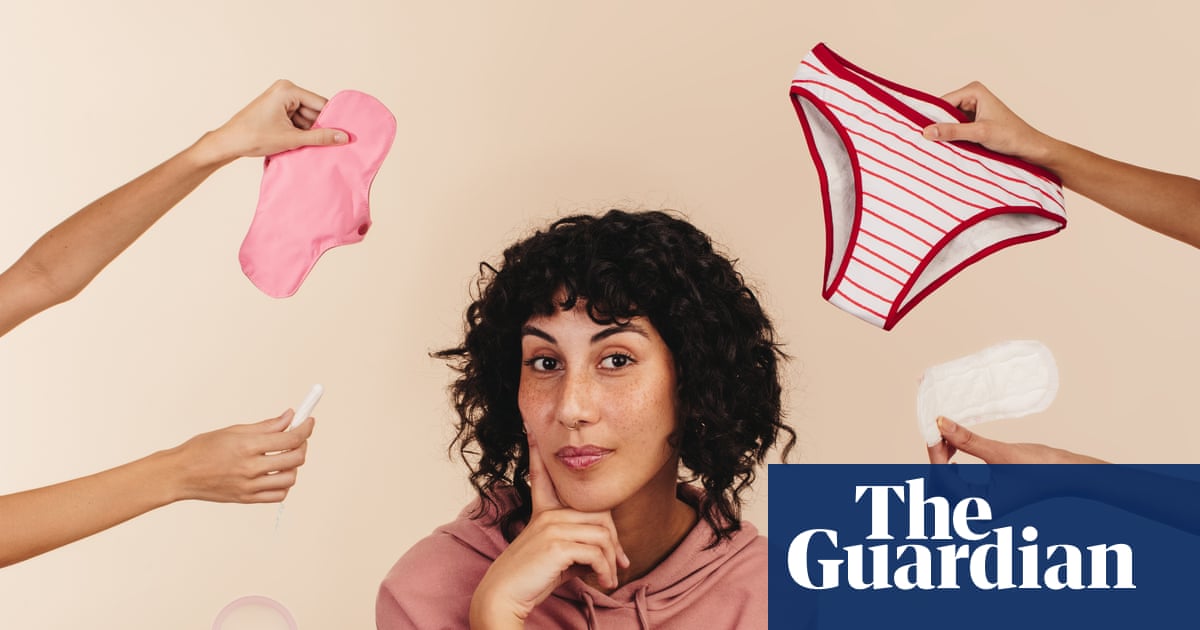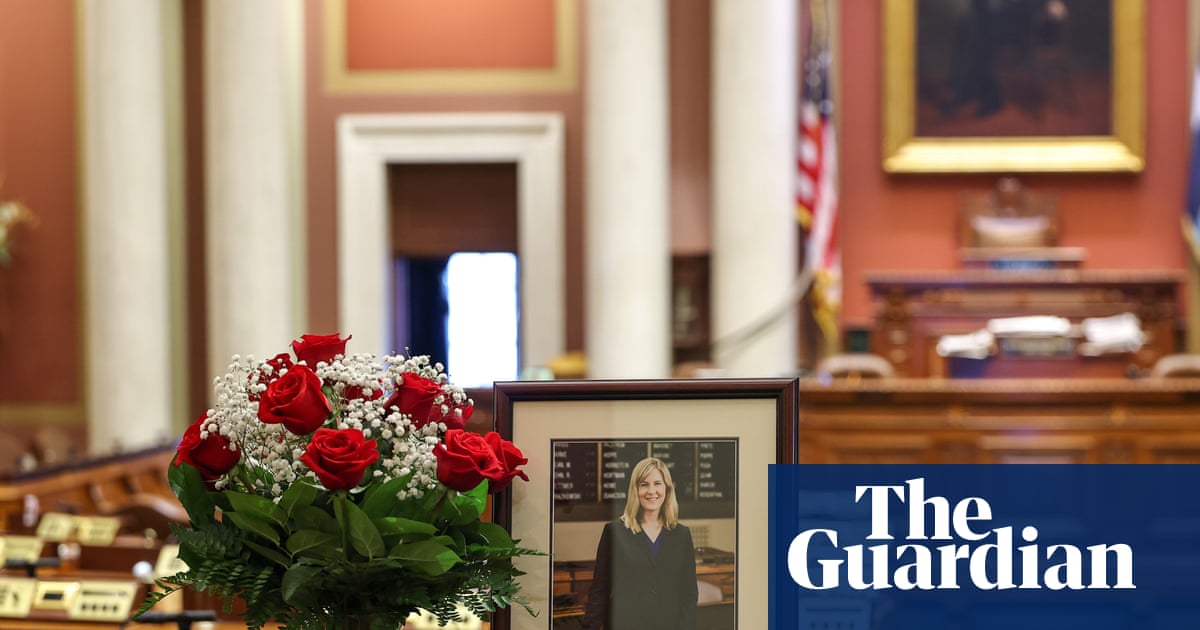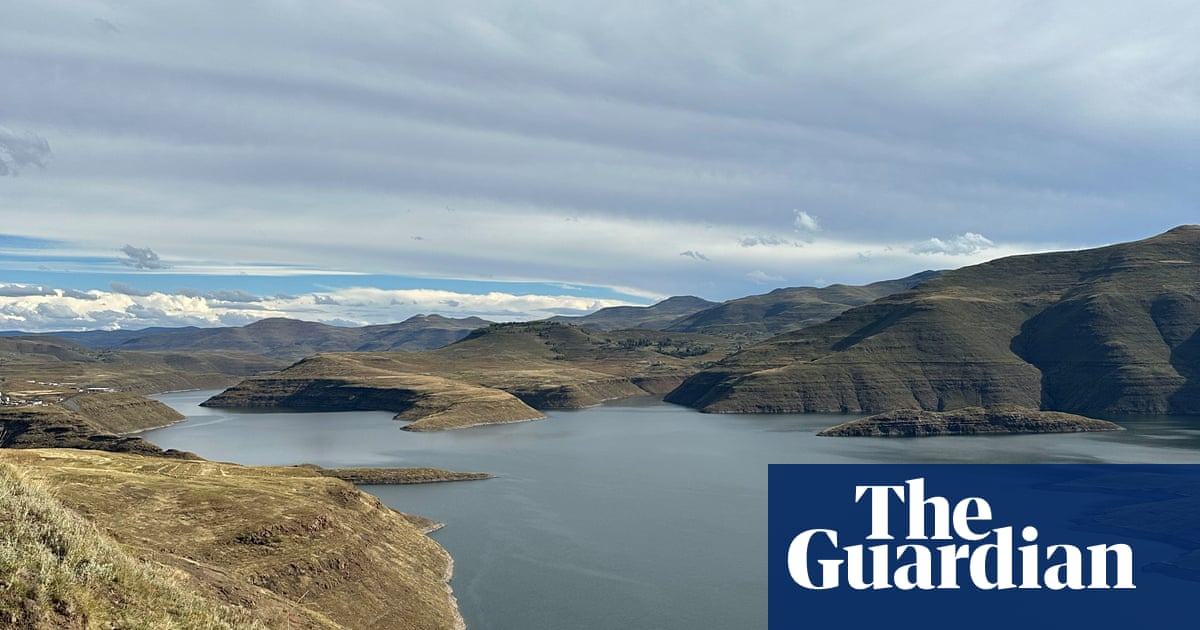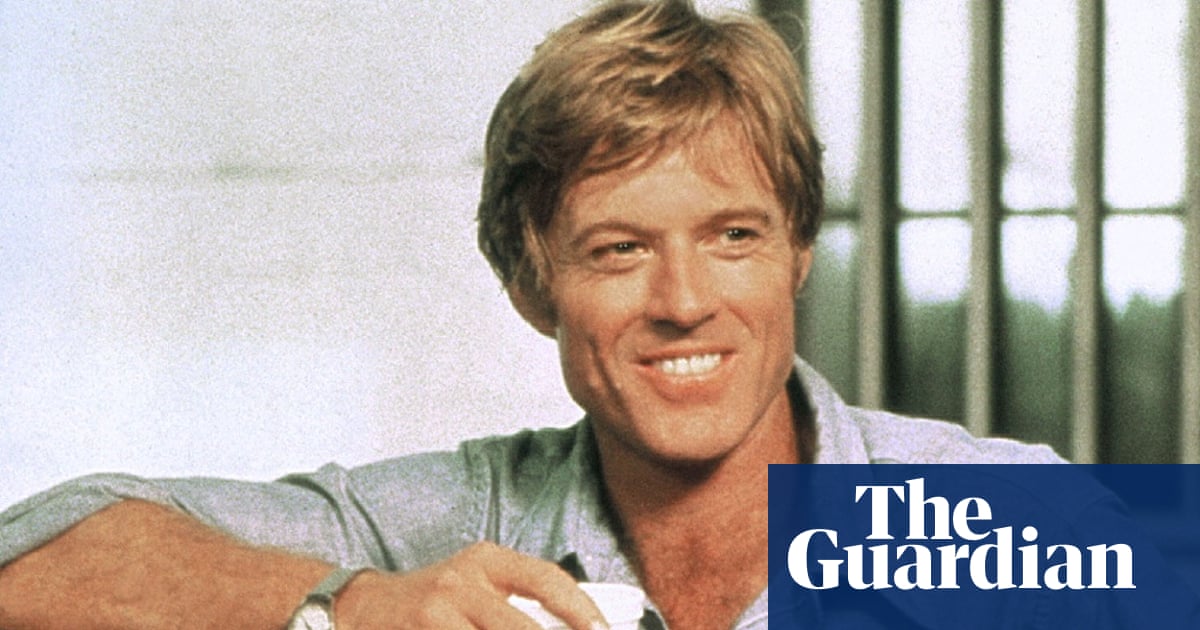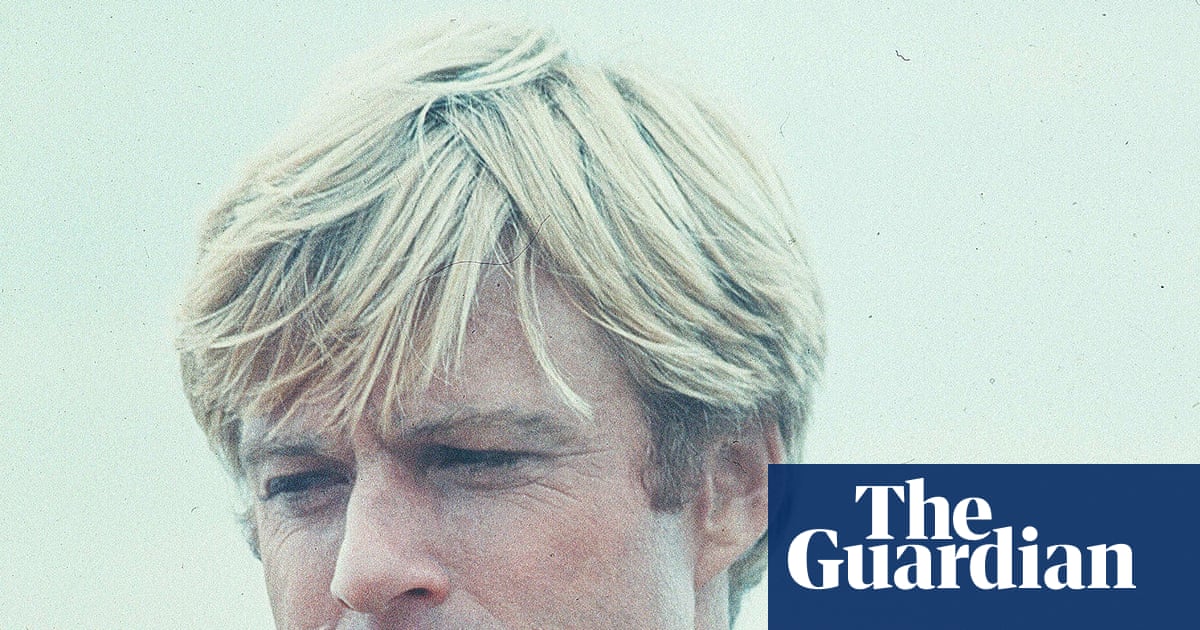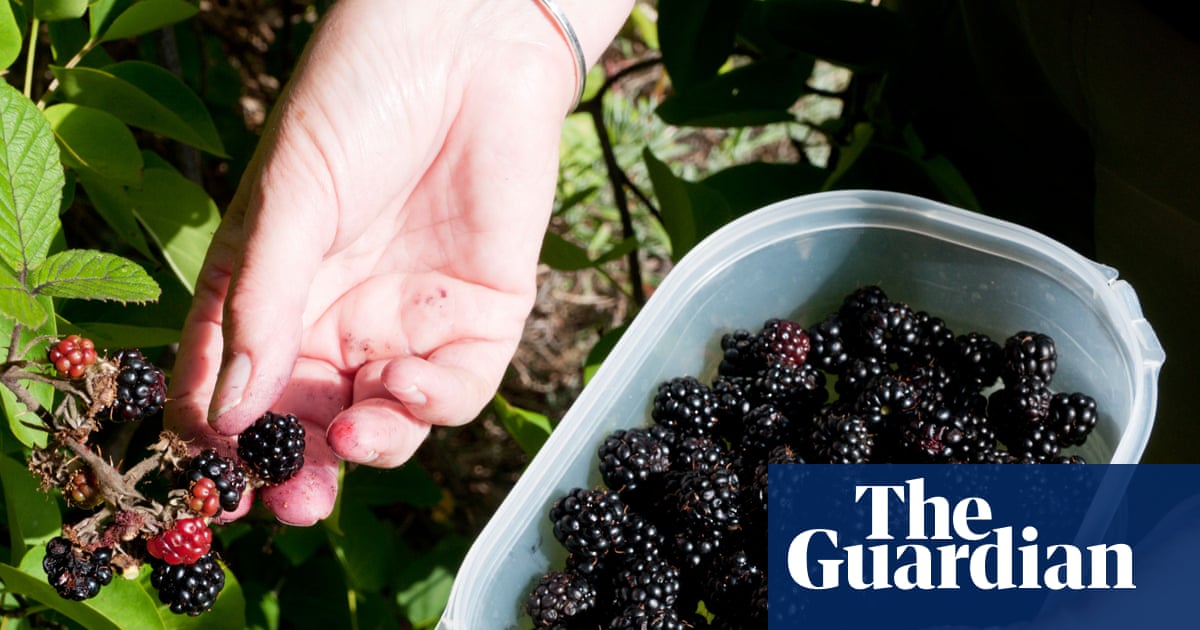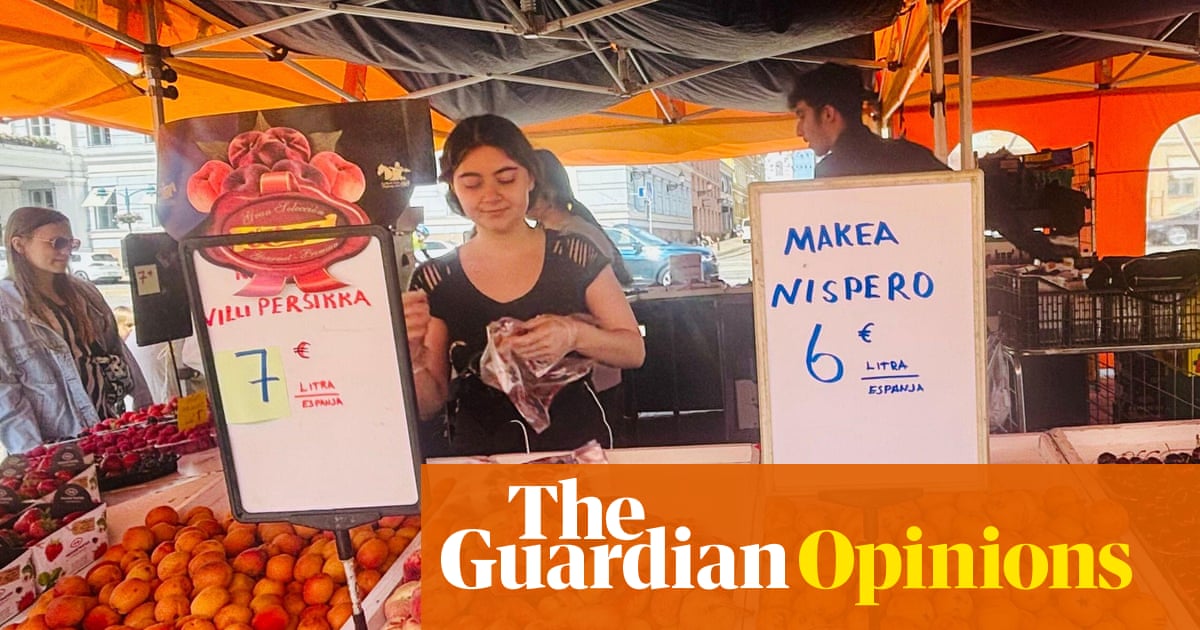There’s a collective intake of breath as the curator slowly unzips the white garment bag to reveal the treasure within: a white military-style jacket embellished with gold buttons and epaulettes, worn by Elton John on his 1981 World tour. To my left, laid out on a table, are a gold Versace bag and a pair of daintily embroidered blue silk shoes dating from the 1720s. To my right, a Vivienne Westwood corset and a Balenciaga pink taffeta evening dress from the 1950s. It’s a fashion lover’s fever dream and it’s all here, at my fingertips.
I’m at the V&A Storehouse in east London, a radical new museum experience that allows anyone to order up any item from the V&A’s vast collection – for free – and to examine it at close quarters. Housed in the former Olympics Media Centre, on the edge of the Queen Elizabeth Olympic Park, this lofty warehouse space gives unprecedented access to more than 250,000 objects, from an 11m wide stage cloth designed by Picasso to a cross-section of a maisonette from the Robin Hood Gardens council estate in Poplar. Gone are the glass cases, white walls and carefully curated exhibits of a traditional museum space. Instead, visitors are invited to look behind the scenes of a working museum, to wander among open shelves stacked high with deliriously eclectic objects and to peer into the workshops where conservators are at work. The effect is part Ikea store, part Victorian cabinet of curiosities. It’s bonkers, exhilarating and I love it.

The opening of this new V&A outpost marks the latest chapter in the reinvention of the Olympic Park as a “new cultural quarter” for London. At the time of the London 2012 games, I lived in Bow, on the edge of the Olympic Park. On the night of the opening ceremony we watched from the window of my flat as fireworks lit up the sky above the stadium. It was the culmination of one of the most ambitious regeneration projects that London had ever seen and we had a ringside seat as this brave new world rose up from a 560-acre brownfield site.
As well as providing a deprived area of east London with world-class sporting facilities, part of the Olympic legacy was the promise to build a new creative hub, somewhere that would inspire locals and visitors alike. We moved out of the area shortly after the games finished, so I was curious to see for myself whether that promise had been fulfilled.
On a bright spring morning the park is quietly humming with activity. Teenagers glide along wide boulevards on roller skates and toddlers play in the water fountains in front of the London Stadium. On the canal, families drift by in pedalos in the shape of white swans, watched over by Zaha Hadid’s imposing Aquatic Centre which carves a graceful arc in the blue sky.
My daughter and I make a beeline for a cluster of new buildings which are lined up along the canal. The East Bank project represents the largest single investment in culture by a London mayor since the Great Exhibition of 1851. The first phase launched in 2023 with the opening of cutting-edge new campuses for University College London (UCL) and the London College of Fashion. Both sites have been designed to be open and accessible to the public. So you can wander into the reception of UCL East and see public art installations – on our visit Luke Jerram’s “Gaia”, an inflatable replica of the Earth, was floating serenely above the atrium – or head to the cafe where your coffee will be delivered to you by a robot waiter.

At the London College of Fashion, the public areas host regular showcases of student work. We stroll around the lobby, all bare concrete and curving staircases, and admire a display of outlandish undergraduate creations – although my daughter is even more transfixed by the cutting edge outfits the fashion students are wearing.
Next door is Sadler’s Wells East, a new outpost of the dance theatre which opened in February. The open-plan foyer is home to a light-filled bar, cafe and dance space – when we drop in for a coffee there’s a community dance class in mid-flow. The 550-seat auditorium will provide a home for visiting dance companies of every genre, from ballet to hip-hop. We have booked tickets for that evening’s show, a family-friendly performance of Snow White by the balletLorent.
Our next stop is the ArcelorMittal Orbit, the twisted red steel sculpture that towers over the Olympic Park. We take the lift up to the viewing platform, a dizzying 80m above the ground. Far below us the London Stadium, now home to West Ham football club, is laid out like a Subbuteo pitch. As a general rule of thumb, I try to avoid any activity that involves having to don an Australian Rules Football helmet and elbow protectors. And yet here I am, joining the queue of teenagers waiting to launch themselves feet first down the Helix, the high-speed helter skelter that snakes around the outside of Anish Kapoor’s look-at-me landmark. My teenage daughter takes one look at the foam helmet and refuses to go any further. “It’s just a big slide!” I tell her. “Come on, it’ll be fun!”
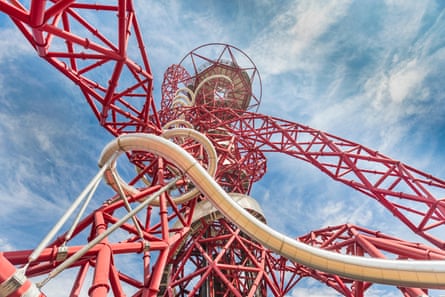
These words – and others that cannot be published here – ring in my ears as I corkscrew down the metal tube at terrifying speed, emerging 40 seconds later feeling like I’ve been flushed down the S-bend. My sensible daughter has taken the lift down and is waiting for me at the bottom. “Oh Mum,” she says.
One of the side-effects of this area’s transformation has been a burgeoning of the local food scene, from the world’s first zero-waste restaurant, Silo in Hackney Wick, to Barge East, a floating bar and restaurant moored in the shadow of the London Stadium. We’ve booked a table at Hera, one of the park’s newest openings, which has been winning accolades for its authentic Greek food.
after newsletter promotion
It does not disappoint. From the basket of homemade bread and dip of smoked aubergine with thyme, honey and balsamic vinegar, to the elegant sea bass carpaccio and charcoal-grilled chicken skewers, everything is sensational. But the standout dish is the feta saganaki – feta cheese, wrapped in angel hair, deep-fried and drizzled with lemon honey. My daughter and I are still dreaming about it weeks later.
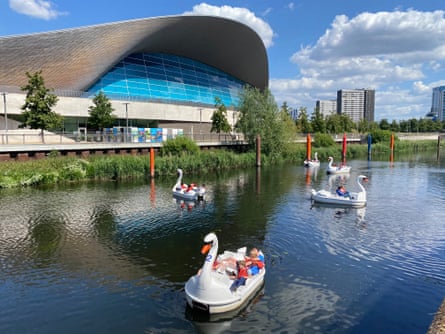
It’s the kind of lunch that needs to be followed by a long walk, so we trace the course of the canal, fringed with head-high whispering grasses, into the northern half of the park, eventually reaching the iconic Olympic rings – which have found a permanent home on a raised mound overlooking the Lee Valley VeloPark.
A group of women dressed head to toe in sequins shimmer past in the late afternoon sunshine, on their way to Abba Voyage. The virtual concert experience has attracted more than two million visitors since opening in a purpose-built arena on the edge of the Olympic Park in 2022. In September, they will be joined by an army of David Bowie fans when the V&A Storehouse becomes the new home of the David Bowie archive, comprising stage costumes, song lyrics, instruments, makeup charts and sketches. And there’s more to come. Next year will see the relocation of the BBC Music Studios from Maida Vale to Stratford and the opening of the V&A East museum in a striking new building inspired, apparently, by an X-ray of a Balenciaga dress.
I’ve enjoyed being a tourist on my old home turf. It may not have the gravitas of South Kensington, the architectural cohesion of the South Bank Centre or the neoclassical elegance of Covent Garden, but East Bank is an invigorating and inspiring addition to London’s cultural scene. And it’s fun. Where else can you slide down Britain’s tallest sculpture, handle vintage haute couture, or dance in front of an Abba avatar, all in one day?
Information on visiting East Bank and the Queen Elizabeth Olympic Park: queenelizabetholympicpark.co.uk

.png) 3 months ago
71
3 months ago
71


